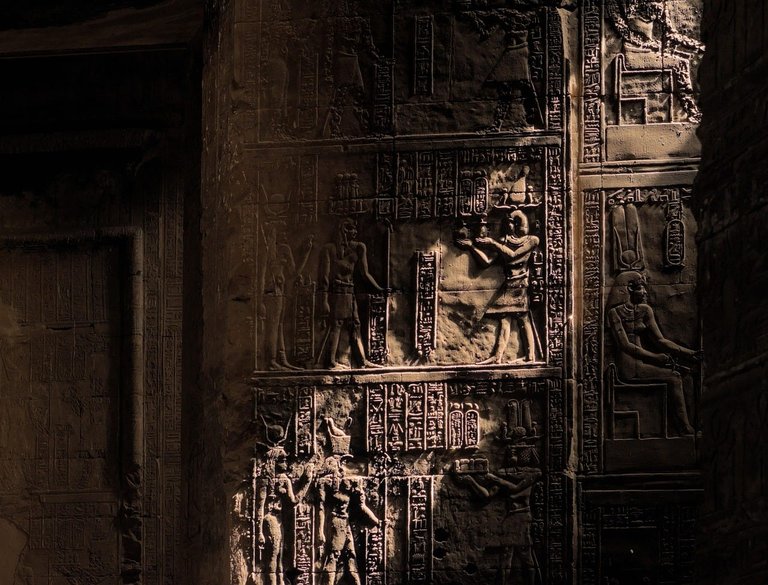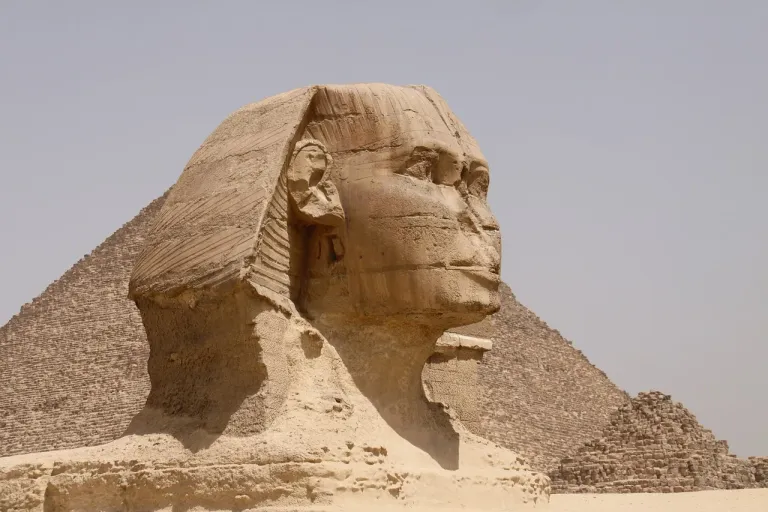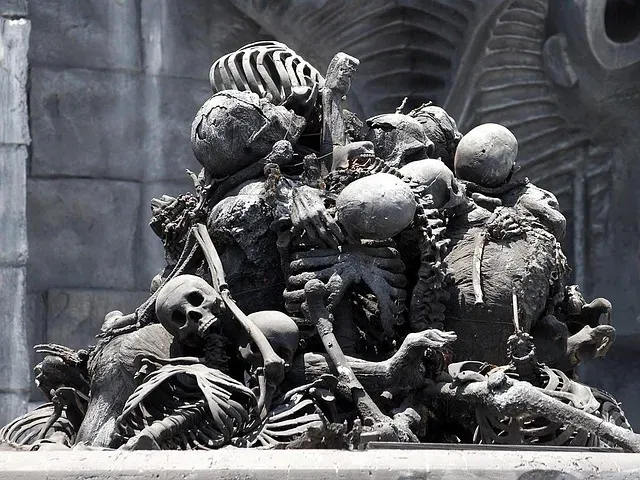The Lost Legacy of the “Non-Human” Pharaohs: Who Were the Giants of Ancient Egypt?

Pharaohs of a Forgotten Race
In the shadow of Egypt's towering pyramids, among the sacred sands that have long guarded the secrets of an ancient civilization, there exists a story too strange and too compelling to be ignored. It’s a tale whispered by those who dare to question what we know about Egypt’s past, of kings and rulers whose size and power defy human understanding. These were not merely men who walked the earth. These were giants. Ancient Egypt's true pharaohs, shrouded in mystery, were possibly not human at all, or at least, not as we understand humanity.
From towering statues to cryptic texts, there are signs that Egypt's rulers, the great pharaohs, may have once been giants. And their legacy? Forgotten, hidden beneath the weight of history, buried deep within the sands of time.
The Pharaohs: Legends in Stone
When we think of ancient Egypt, we envision colossal monuments, massive stone structures, and kings whose faces were immortalized in stone. The Great Sphinx, the massive obelisks, and the pyramids themselves, each a testament to a civilization far beyond its time. But among these towering structures, are there also the echoes of a race of beings who were themselves larger than life?
One such example comes from the ancient texts that speak of the gods. These gods, often described as gigantic in stature, are portrayed as superior beings, creatures who could perform miraculous feats, communicate with the heavens, and rule over humanity with divine power. These gods, many of whom are linked to the pharaohs, were not considered “human.” They were described as possessing divine or supernatural characteristics. Yet their appearance was one of great size and strength, suggesting they were not ordinary mortals. They were giants in every sense of the word.
The Mysterious Kings of Egypt: Pharaohs of the Giants
One of the most famous pharaohs associated with the idea of a non-human, giant ruler is Narmer, the first king of unified Egypt. His palette, known as the Narmer Palette, shows a king of imposing stature, towering over his enemies in battle, his physical size and strength depicted as god-like.
Yet it isn’t just Narmer. Throughout the dynastic period, there are references to rulers whose attributes seem supernatural. Pharaohs like Osorkon II, Thutmose III, and Ramses II were all described in texts as possessing extraordinary abilities, perhaps even inhuman attributes. The size of their tombs, the grandeur of their monuments, and the awe-inspiring scale of their reigns all hint at something more than just powerful rulers. They seem to stand as monuments themselves, not simply to human achievement, but to a legacy that transcends our understanding of human history.
What if these figures weren’t just kings of Egypt? What if they were descendants of a race of beings, giants, who were once revered as gods by the ancient Egyptians?
Giants in Ancient Egyptian Mythology: The Gods Among Us
Ancient Egyptian mythology is filled with references to beings who were much larger than ordinary humans. Gods such as Horus, Osiris, and Ra were often depicted as towering over humans, their divine nature marked by an otherworldly size. But was this size purely symbolic, or could it be a reflection of something much more literal?
The ancient Egyptians spoke of the Nephilim, a race of beings that were said to be born of the gods and humans. In the biblical sense, the Nephilim were giants, beings whose size and power were far beyond the ordinary. While the Bible speaks of these giants in a more localized context, the Egyptians may have been referencing the same beings, and their kings may have been direct descendants of this race.
In many ways, the pharaohs themselves were seen as divine figures, the living gods on earth. The pharaoh’s connection to the gods wasn’t just symbolic; it was believed that the pharaoh’s bloodline carried the divine essence of the gods themselves. This divine bloodline, passed down through the generations, could explain why the pharaohs were not just kings, they were giants in both stature and spirit.
Archaeological Evidence: Giants in the Dust
The most compelling evidence for the existence of giants in ancient Egypt, however, comes not from mythology but from archaeology itself. Some of the most famous discoveries in Egypt have hinted at the existence of a race of unusually large people.
The skeletons uncovered by archaeologists in the Valley of the Kings, particularly those from tombs belonging to pharaohs such as Seti I and Ramses II, have shown that these rulers were physically larger than most humans. While these skeletons are not as massive as the giants described in ancient texts, they do show an unusual degree of size. One theory posits that these larger-than-life kings were, in fact, members of a race of giants who were part human, part divine, and part otherworldly.
Additionally, some of the colossal statues of pharaohs like Ramses II, standing over 60 feet tall, seem to suggest that these kings were not merely great in stature but in every sense. These statues could be seen as symbolic representations, but they also hint at the fact that the ancient Egyptians may have been depicting their kings as true giants, not just powerful figures.
Fall of the Giants: A Legacy Lost to Time
So why are these giants, these non-human rulers, largely forgotten? Why have their stories been obscured? The answer may lie in the changing nature of history itself. As civilizations rise and fall, so too do their myths, their gods, and their kings. Perhaps the giants of ancient Egypt were once revered as gods, but over time, the memory of their true nature was lost to myth and legend.
Another possibility is that the giants. whether truly of divine or extraterrestrial origins, they were intentionally erased from the historical record. The rise of more “human” dynasties could have led to a deliberate attempt to downplay the existence of the giants in favor of more relatable rulers. As human understanding of the world and the cosmos evolved, the idea of giants who walked among the gods may have been seen as too fantastical to be believed, so their stories were buried.
The remnants of their legacy remain scattered across Egypt, in the form of ancient texts, giant statues, and colossal tombs. Perhaps the true history of the Egyptian pharaohs has been veiled in layers of time, waiting to be uncovered again.
The Mystery of the Giants Lives On
The giants of ancient Egypt remain one of the most tantalizing mysteries of human history. Were the pharaohs truly giants whose size and power exceeded the limits of ordinary humanity? Or were they something else entirely—descendants of gods, visitors from another world, or ancient beings whose bloodline carried the echoes of forgotten ages?
As we continue to unearth the remains of Egypt’s past, we may one day find the answers to these questions. But for now, the giant legacy of the pharaohs remains buried beneath the sands, an enduring enigma, as towering and mysterious as the monuments they left behind.
Posted by Waivio guest: @waivio_cosmicsecrets

